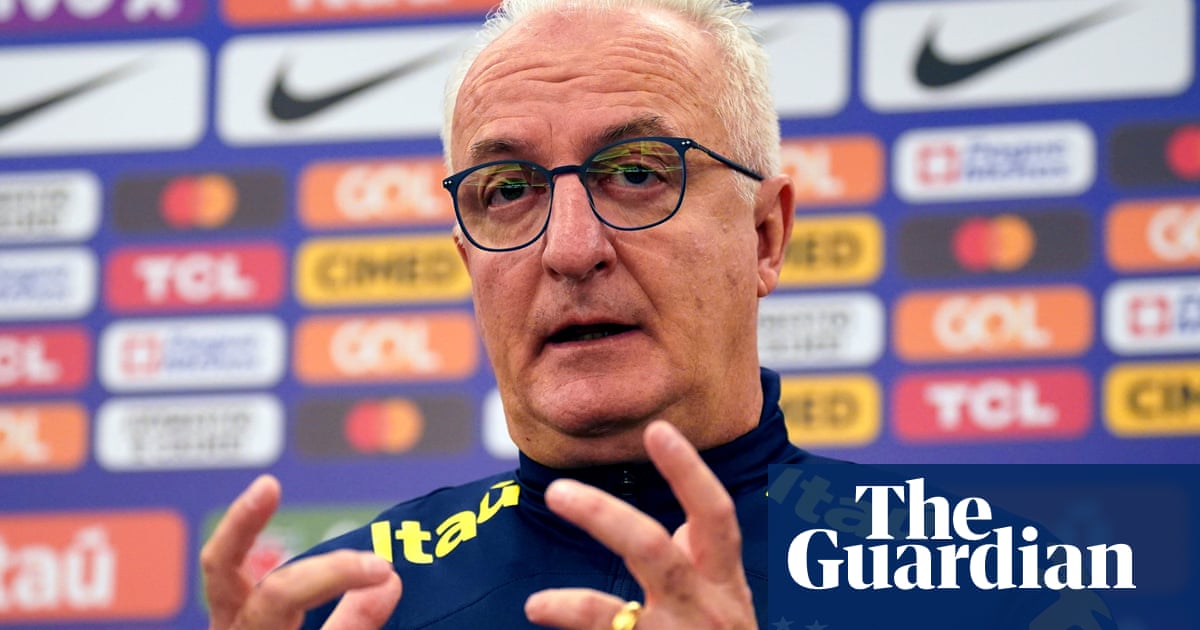
am sleeping in a shepherd’s hut 30 metres from a dozen wildcats. It’s an unusual way to spend a Monday night, especially in rural Devon. In the valley are the familiar sounds of dogs barking and foxes shrieking, as well as the unfamiliar sounds of storks clapping their beaks together, a noise that has been absent from Britain for 600 years. Beavers, iron age pigs, mouflon (wild sheep), Heck cattle and Exmoor ponies also live on this 120-hectare farm near Lifton, owned by rewilding specialist and farmer Derek Gow.
This unassuming old dairy farm with its small whitewashed barns is a hub for covert species reintroductions. In 1995, Gow started working with water voles – his first species of interest – after buying a batch from a fish farm in Hampshire. Then he noticed restored wetlands were naturally silting up and realised another keystone species was missing: beavers. Bereft of beavers, ponds require huge amounts of management to keep them open, so in 1997 he drove to Poland to get some.
Already, the 55-year-old has released 25,000 water voles and dozens of beavers, two keystone species he has worked with for a quarter of a century. “Beavers are the creators of life – without beavers there is no life. The other animals are stock cubes, which you put into the stew, spreading richness and flavour to everything,” says Gow, who is blunt, observant and determined. To many ecologists he’s a visionary; to government officials he’s a pain in the arse. In the afternoon I spend with him he swears more than most people would in a lifetime.
His new book, Bringing Back the Beaver, documents his 25-year struggle to rewild Britain’s waterways and the people who made this happen. Gow won’t take no for an answer. “I’m doing this because it’s a good idea, and I’m not having the ending any other way. It’s going to be our way, now, at this time. I’ll have my way when beavers are everywhere,” he says.
In August a milestone was reached: beavers were allowed to stay on the River Otter in Devon. The Department for Environment, Food and Rural Affairs (Defra) concluded that they brought measurable benefits to wildlife by turning rivers into braided systems of dams and channels that increase populations of fish, amphibians and other wildlife. They also alleviate flooding by reducing “peak flows”.
These large rodents are back after an absence of 400 years because of mavericks like Gow. The UK is under international obligation to reintroduce missing species but in practice government rules are too restrictive and complex, says Gow. “What’s driven the beaver stuff and the free-roaming wild boar stuff is just people letting them go. Just saying, enough. There’s no point applying for this shit, we’ll never get anywhere. Just do it.”
Gow is best known for his beaver work but over the years his eclectic collection of animals has grown – in 2010 he got wildcats from a British zoo and in 2017 he obtained storks from Warsaw zoo (the same batch that went to the rewilded Knepp estate). Next year he will start releasing storks and the following year he plans to let the wildcats go. A feasibility study found that Devon is one of the best habitats for wildcats, which like well-hedged farmland and mainly eat rabbits and rodents. A licence is currently not required to release these two species.
“There will be a lot of people out there who are not going to like this,” says Gow. “They like to do things very slowly and consider every option, have another cup of tea, have another Kipling cake, have another wee chat in four months’ time. If we keep on course with this we’ll be left living on a planet full of pigeons and dogs on the beaten-down crust of our own excrement.”
Advocates of rewilding agree that we need to be bolder when it comes to species reintroductions. Dr Christopher Sandom, a senior lecturer in biology at the University of Sussex, says the assumption should be that we will reintroduce lost native species unless there is a good reason not to. “I think the burden of responsibility is wrong,” he says. “The starting point should be we expect these species to come back. If someone has a really, really good reason why that’s going to be a massive problem for a particular area, they should be making the case to say why it shouldn’t be happening.”
Gow, who bought his current farm in 2006, used to be a conventional farmer. At one point he had 1,500 breeding ewes and 300 cattle but wasn’t making any money and heavy clay meant the land was always boggy. Generations of farmers had struggled with the conditions. Soon after he bought his farm, Gow started fencing the wettest areas off and digging ponds. The transformation from unproductive land to rewilding safari park began.
In the coming decades, his aim is to get rid of all commercial livestock and remove all fences from the farm, apart from the one around the edge. The speed with which nature recolonises the land delights Gow – stone chats have nested for the first time in two decades, while meadow pipits, reed buntings, marbled white butterflies are all becoming more plentiful. Trees are starting to fold into the land and patches of scrub are spreading like chickenpox. “I don’t know what it’s going to look like but there will be a shit tonne more life,” says Gow, with characteristic frankness.
He knows the land well – while driving around in his 4x4, dodging Heck cattle (a hardy breed closely related to the extinct aurochs), swearing and scratching the odd pig, he spots a salad burnet for the first time. It is a small, unremarkable plant to me, but to Gow it’s a delight. “That is astounding. Well, hallelujah!” It’s a small change, but it suggests the farm’s unusual inhabitants are doing their job: they are here to give life to the landscape and it’s working.
Aside from the daily grind, there is a romanticism to rewilding and Gow wants to tap into this market, which is why he is setting up a wildlife safari to fund his work. His three shepherd’s huts were meant to be open for bookings this year, but coronavirus has pushed things back to next summer. When I ask him what visitors will see, he poetically describes a panoply of big animals wandering around, storks flying down to flush out grasshoppers and crickets, beavers playing at night and wildcat kittens playing in the pens. As at Knepp, this is a mimic, or recreation, of what might have been here – showing an abundance of wildlife is normal, natural and right.
Gow does not have reserves of cash to fall back on and the transition between farm and wildlife safari centre has been slow. He makes around £150,000 profit a year from his wildlife consultancy business, wildlife photography courses, building film sets, writing and training, he tells me. He gets £23,000 in farm subsidies. Profits are ploughed back into his rewilding project, which costs hundreds of thousands a year to run.
Defra board member and multimillionaire Ben Goldsmith has financially supported Gow for more than a decade. Goldsmith says that the public mood is changing when it comes to species reintroductions. “I think we’re going to see more and more of this as the years go by,” he says. Durrell Wildlife Conservation Trust and the Vincent Wildlife Trust are also involved in Gow’s species reintroduction work.
On the farm there are 150 cages for water voles (Gow can release 3,000 animals a year) and 10 cages for wildcats (he says the UK should produce 150 wildcat kittens annually). There are around 30 free-living beavers and three enclosures for black and white storks, of which he has around 30.
Gow is very supportive of the Amphibian and Reptile Conservation Trust’s push to release pool frogs. As with most things, species reintroduction works most effectively when done at scale. “We don’t just bring back a pansy six or seven of them, with little earnest graduates with thick glasses breeding them in test tubes,” he says. “What we do is we maybe employ farmers and breed bucket loads of the bastards and we put them back in huge numbers, so by the time we’ve finished they’re waking up every kid through the night with the incessant croaking of their calls.”
UK famers receive around £3bn in subsidies every year and Britain’s departure from the EU is causing the most significant shake-up to farming in decades. Under the new environmental land management scheme (ELMS), which will take over from the EU’s common agricultural policy (CAP), Gow wants subsidies to move away from supporting conventional farming to paying people who want to reintroduce animals like wildcats, storks and water voles. “We can’t do this for ever, on the basis that it’s one or two of us who can afford to do it and everybody else just can’t,” he says.
There are signs this is happening. In August, the environment minister Rebecca Pow said that beavers could be considered a “public good” so farmers might be paid to have them. Gow’s neighbour Derek Bambury, an intensive dairy farmer, says he could see himself farming beavers. “I’ve been farming for so long you get in a rut, but if the incentives change then you change. If they make it worthwhile and pay you to keep beavers, why not?”
Antagonism between farmers and conservationists is a common feature of the British countryside and Gow is an interesting bridge between the two. He gets on well with his farming neighbours, and admires them for just getting on and trying things, instead of engaging in “cheap talk”. He thinks the country’s guild of rewilding professionals are its farmers because they know how to make things happen at scale.
American farmer and poet Wendell Berry has described farming as a conversation with nature, but the modern farming system is broken. Many farmers are victims of a system that has become a race to the bottom in which the environment, livestock and people pay a heavy price for the consumer’s cheap food. Gow believes farmers should farm in a way that respects nature. In some areas this will be growing cereals or grazing traditional livestock, and in other parts – less suited to agriculture – there should be beavers, wildcats and storks.
To many, rewilding may seem like a pipe dream, but Gow proves this type of fanciful thinking can become a reality.
The 6A bus back to Exeter takes me winding through a tapestry of fields and hedgerows. I imagine this landscape recreated à la Gow: stork nests on people’s chimneys, networks of beaver dens along rivers and occasional wildcat sightings.
This vision is not created despite farmers, but by farmers, who are paid for their efforts. Gow reinvents what it means to be a guardian of the countryside and wants others to follow suit. “At the end of the day, we’re farming a different kind of life. The skills, the mindset and the thinking is the same,” he says.
Find more age of extinction coverage here, and follow biodiversity reporters Phoebe Weston and Patrick Greenfield on Twitter for all the latest news and features












